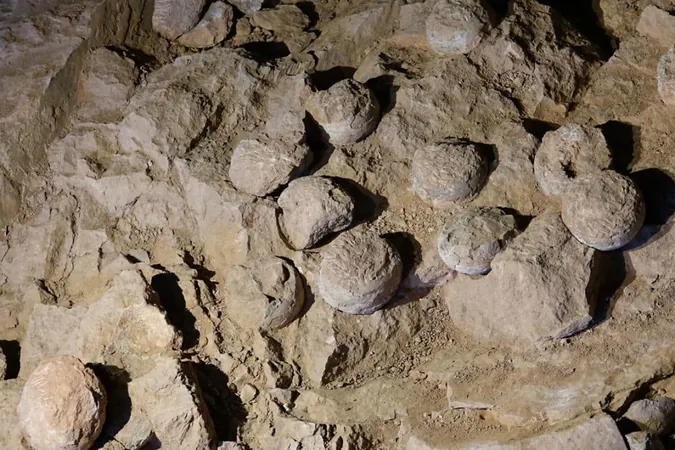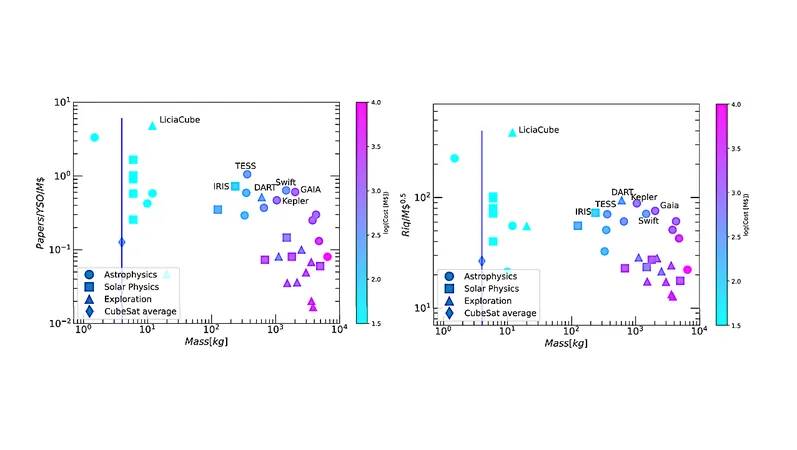
Astonishing 80-Million-Year-Old Dinosaur Fossil Site Reveals Surprise Reproductive Behavior!
2025-04-08
Author: Rajesh
Astonishing 80-Million-Year-Old Dinosaur Fossil Site Reveals Surprise Reproductive Behavior!
In a groundbreaking discovery, a recent 3D scanning survey of an ancient dinosaur fossil site in central China has illuminated a unique reproductive behavior among dinosaurs, overturning previously held beliefs about their nesting practices.
Located at the famed Qinglong Mountain dinosaur egg fossil cluster in Hubei Province, the investigation revealed that dinosaur eggs were laid in intricate, curved arrangements, a phenomenon unseen at other paleontological sites globally.
Curved Egg Patterns: A Window into Dinosaur Reproduction?
According to findings reported by Global Times, researchers from the Hubei Institute of Geosciences utilized cutting-edge 3D laser scanning technology to uncover these striking egg clusters, grouped in arcs of three to five. Lead scientist Zhao Bi described the formations as having created “a highly artistic pattern that has never been seen before.” This contrasts sharply with traditional nesting sites where eggs are usually found laid radially or vertically embedded in sediment.
By meticulously mapping the spatial positions of these egg fossils in 3D, researchers confirmed that the curved arrangements are not isolated incidents but represent a systematic pattern across the site. This discovery suggests a complex reproductive behavior among the local dinosaur species — potentially indicating efforts to shield the eggs post-laying or a strategy aimed at enhancing hatching success.
Zhao noted, “We are conducting further research to determine the exact nature of this behavior. Advanced technology allows us to gather vital information from the site without any disturbance.”
Digital Mapping: Revolutionizing Paleontological Research
Covering an expansive area of 8,000 square meters, the Qinglong Mountain site boasts the largest and most intact collection of dinosaur egg fossils worldwide — totaling over 300,000 eggs. Researchers employed meticulous terrain sampling with laser scanners to develop point cloud datasets. This high-resolution digital mapping measures down to the millimeter, offering intricate details of the fossilized landscape and egg placements while ensuring the preservation of these delicate specimens.
Long Jingquan, a specialist in digital heritage conservation, highlighted that these innovative techniques aim to address “objective on-site research dilemmas, which traditional methods may struggle to overcome without risking damage to the site.”
Eggs Unveiling Ancient Ecosystems and Future Research
Discovered in 1995, the Qinglong Mountain site has been a pivotal resource for understanding Cretaceous-era dinosaur life. The preservation quality of the eggs, largely intact with minimal shell fragmentation, grants a unique opportunity for researchers to analyze dinosaur development in-depth.
“This site has consistently provided critical evidence for reconstructing the true egg-laying scenarios of dinosaurs. Its excellent state allows us to see how dinosaurs thrived during the Jurassic period,” Zhao explained.
Current efforts are now focused on identifying potential embryos within the fossilized eggs and uncovering nearby dinosaur footprints, which will further contextualize these fascinating behaviors. Moreover, scientists are integrating AI technology to automate the classification of fossils, propelling research into an exciting new era.
What Other Secrets Are Lurking in the Past?
As researchers delve deeper into this exceptional fossil site, we can only wonder — what other astonishing revelations about dinosaur life will emerge? The Qinglong Mountain site has undoubtedly become a treasure trove of ancient mysteries, igniting imaginations and reshaping our understanding of the dinosaur world! Stay tuned for more groundbreaking discoveries!


 Brasil (PT)
Brasil (PT)
 Canada (EN)
Canada (EN)
 Chile (ES)
Chile (ES)
 Česko (CS)
Česko (CS)
 대한민국 (KO)
대한민국 (KO)
 España (ES)
España (ES)
 France (FR)
France (FR)
 Hong Kong (EN)
Hong Kong (EN)
 Italia (IT)
Italia (IT)
 日本 (JA)
日本 (JA)
 Magyarország (HU)
Magyarország (HU)
 Norge (NO)
Norge (NO)
 Polska (PL)
Polska (PL)
 Schweiz (DE)
Schweiz (DE)
 Singapore (EN)
Singapore (EN)
 Sverige (SV)
Sverige (SV)
 Suomi (FI)
Suomi (FI)
 Türkiye (TR)
Türkiye (TR)
 الإمارات العربية المتحدة (AR)
الإمارات العربية المتحدة (AR)